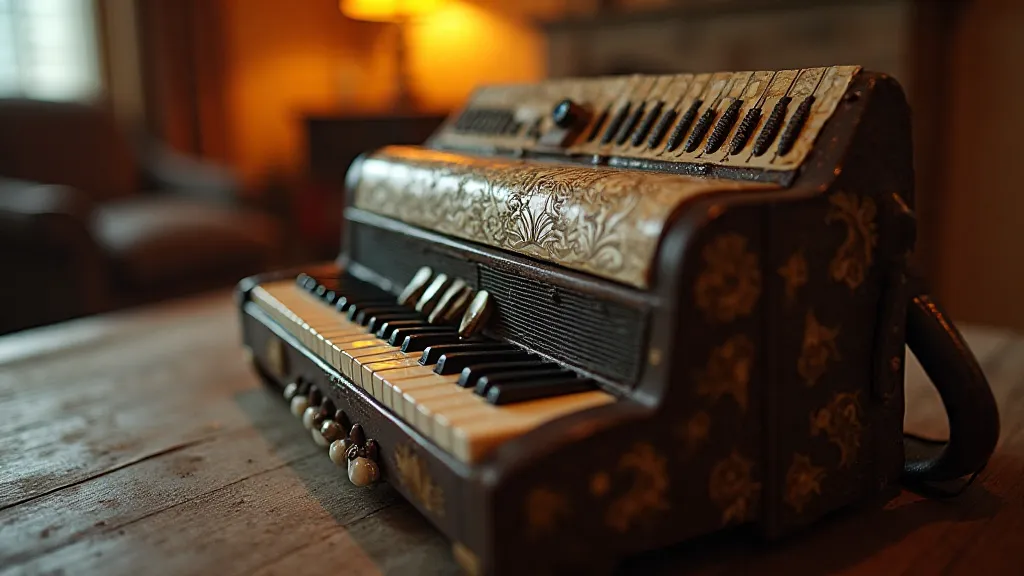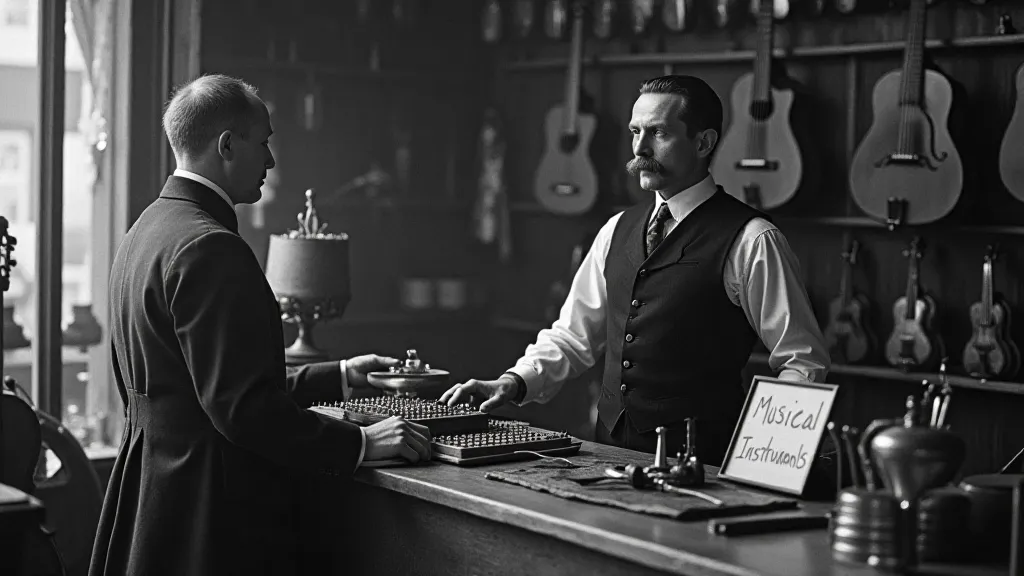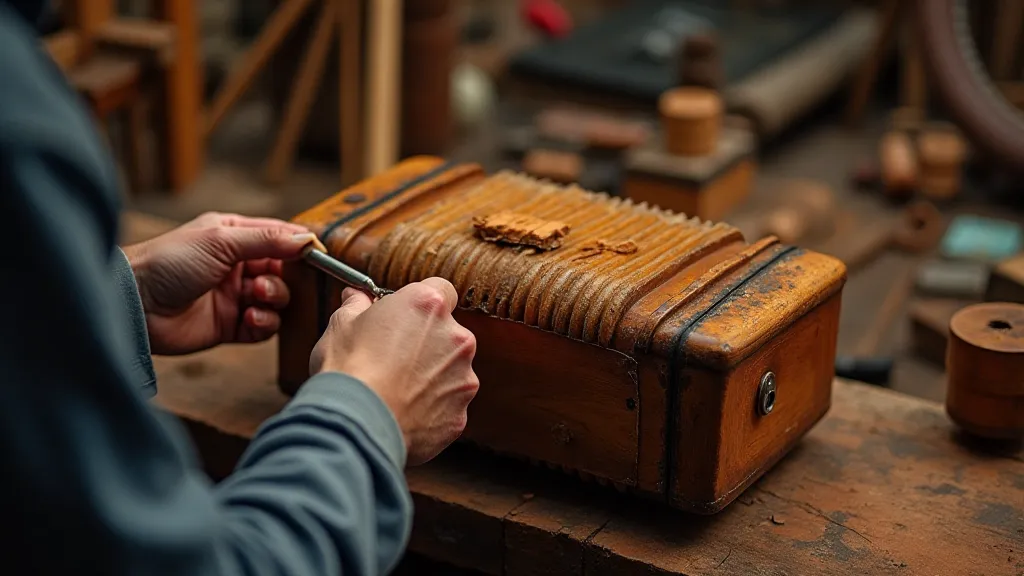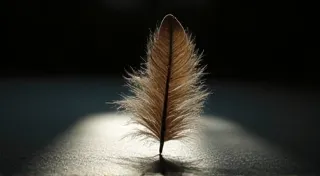From Royal Courts to Village Squares: The Changing Status of Instruments Across Time
The music we cherish—whether a soaring Celtic fiddle tune, a mournful Appalachian ballad, or a vibrant Balkan polka—is intrinsically linked to the instruments that create it. But the story of these instruments isn't just about their construction or sonic qualities; it's about their journey through society, reflecting the changing tides of power, class, and cultural values. Instruments, once symbols of royalty and exclusivity, have evolved into cherished elements of community life, echoing the shared experiences of generations. This is a story etched in wood, metal, and string, a testament to the enduring power of music.
Consider the accordion, for example. Its immediate accessibility might suggest a humble origin, but the instrument's history is surprisingly complex and layered. Early forms, evolving from the concertina and the harmonium in the 19th century, were initially embraced by traveling entertainers and, surprisingly, by the burgeoning middle class. They were often expensive, meticulously crafted by skilled artisans, and associated with sophistication – a counterpoint to the often-romanticized image of the rustic folk musician. My grandfather, a quiet man of few words, possessed a beautiful Hohner accordion from the 1930s. I remember the scent of aged wood and leather as he carefully cleaned it, running his fingers over the mother-of-pearl keys. He rarely played, mostly keeping it for special occasions—a poignant reminder of a bygone era of elegance and restraint.

Instruments of Power: Courtly Music and Elite Patronage
Historically, in many cultures, musical instruments held a distinct social hierarchy. In royal courts across Europe and Asia, elaborate instruments like the lute, the harpsichord, and the koto were not merely tools for creating music; they were status symbols, often commissioned from the most renowned craftsmen and played exclusively for the elite. The craftsmanship involved was extraordinary – the intricate carving, the precise tuning, the selection of rare woods – all contributing to an instrument's inherent value and exclusivity. Think of the intricately painted Italian Renaissance lutes, adorned with scenes of mythology and allegory, a visual manifestation of the courtly aesthetic. Or consider the development of the Japanese biwa, used to accompany epic narratives recited by court musicians, imbued with a sense of solemnity and prestige. The very materials selected and the techniques employed spoke volumes about the patron’s wealth and influence, subtly reinforcing their position within the societal order.
This association with power wasn’t accidental. Rulers understood the power of music to reinforce their authority and to entertain (and thus control) their subjects. Musical performances were carefully orchestrated events, designed to project an image of wealth, sophistication, and divine sanction. Access to these instruments and the skills to play them was tightly controlled, solidifying the divide between the ruling class and the common folk. The very act of playing certain instruments could be restricted, a subtle form of social engineering. The sounds themselves were often carefully chosen to evoke specific emotions and reinforce desired sentiments—a deliberate attempt to shape the cultural landscape. This careful curation extended beyond just the instruments themselves; the performance space, the attire of the musicians, and even the audience were all carefully controlled elements in a larger display of power.
The Democratization of Music: Guilds, Printing, and the Rise of the Middle Class
The shift began gradually, spurred by a confluence of factors. The decline of feudalism, the rise of the merchant class, and the increasing availability of printed music all played a part. The Guild system, initially safeguarding craftsmanship, eventually encountered challenges as new manufacturing techniques emerged, albeit slowly. While initially resistant to change, the rise of cheaper, mass-produced instruments began to broaden access to music making. The printing press played a crucial role, allowing for the widespread distribution of sheet music, freeing performers from reliance on oral tradition and allowing for greater standardization and dissemination of musical styles. The very essence of musical creation began to transform, moving from a closely guarded secret passed down through generations to a more accessible and adaptable form.
The burgeoning middle class, eager to emulate the aristocracy but lacking the same resources, sought affordable alternatives. This spurred innovation and led to the development of simpler, more accessible instruments. The development of the pianoforte, a more practical and versatile instrument than the harpsichord, is a prime example. While still a significant investment, the pianoforte’s greater accessibility helped democratize keyboard music, moving it beyond the exclusive domain of the elite. This desire to emulate the upper classes also drove a wider appreciation for the skills involved in instrument making; exploring the significance of the materials and the tradition surrounding them—a facet examined further in The Voice of the Wood: Understanding the Acoustic Properties of Traditional Instrument Materials.

From Dance Halls to Village Squares: The Rise of Folk Music
The 19th and 20th centuries witnessed the most dramatic transformation in the status of many folk instruments. As industrialization and urbanization disrupted traditional ways of life, folk music, initially performed in rural settings, began to find new audiences in urban dance halls and music venues. Instruments like the fiddle, the banjo, and the harmonica, previously associated with rural communities, gained widespread popularity. The Irish flute, often crafted from simple materials like blackthorn wood, transitioned from being a household instrument played for family gatherings to a symbol of Irish cultural identity, fiercely embraced by emigrant communities across the world. The shift also fostered a growing awareness of the cultural significance embedded within these instruments – a heritage often intertwined with ritual and tradition, as explored in The Instrument as Ritual: Exploring the Symbolic Roles in Ceremonial Practices.
This shift wasn’t simply about wider accessibility; it was also about a re-evaluation of what constituted "valuable" music. Initially, folk music was often dismissed as unrefined or unsophisticated. However, as interest in national identity and folk traditions grew, folk instruments were increasingly celebrated for their authenticity and connection to the past. The Appalachian dulcimer, for example, once a relatively obscure instrument, experienced a resurgence in popularity as part of the broader folk revival movement. The understanding of these instruments became inextricably linked to a larger understanding of the culture that created them—a link between the maker and the music, the instrument and the people.
Restoration and Appreciation: Keeping the Legacy Alive
Today, many vintage instruments are highly sought-after, not just for their musical qualities but also for their historical significance. The craft of instrument restoration has become an art form in itself, requiring a deep understanding of the original construction techniques and the materials used. Restoring an antique accordion, for example, is more than just replacing bellows and reeds; it's about preserving a piece of history, reconnecting with the hands that crafted it, and understanding the cultural context in which it was played. It’s a tangible link to a past where music played a different role in society. The skills and knowledge required for this restoration often go beyond technical expertise, encompassing a broader understanding of cultural heritage and the people who created the instrument – demonstrating the profound connection between craftsmanship and cultural identity.
Collecting antique instruments isn’t simply about acquisition; it's about stewardship. It's about ensuring that these instruments are cared for and appreciated, so that future generations can experience the beauty and cultural richness they represent. It’s a reminder that even seemingly humble instruments can tell profound stories about the evolving relationship between music, power, and community. The preservation of these instruments extends beyond their physical restoration, demanding a deeper understanding of the intangible heritage they represent—the stories, traditions, and cultural values embodied within them. This necessitates a comprehensive approach that integrates technical expertise with a broader appreciation for the cultural context in which these instruments were created.

The journey of an instrument, from the royal court to the village square, reflects the broader story of human progress—a testament to the enduring power of music to transcend social barriers and connect us to our shared heritage. The echoes of past generations resonate within the wood and metal of these instruments, reminding us of the enduring human desire to create, to express, and to connect—a legacy that continues to inspire and enrich our lives. The very act of appreciating these instruments necessitates an understanding of the creative process – of the maker’s vision and the cultural influences that shaped their work. Further enriching this understanding is the examination of how these instruments carry stories and memories, acting as powerful symbols of cultural identity—a facet explored in The Echoing Chamber of Memory: Instruments as Relics of Ancestral Knowledge. Ultimately, these instruments are not merely objects; they are vessels of cultural heritage, embodying the values, beliefs, and artistic expressions of generations past.





